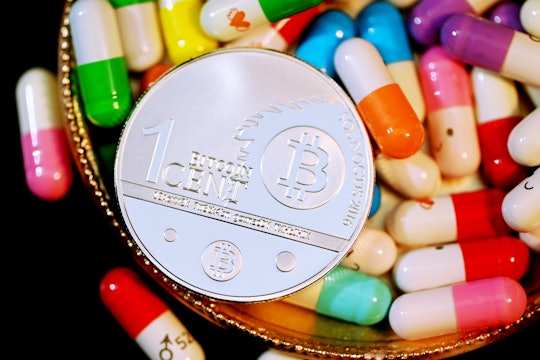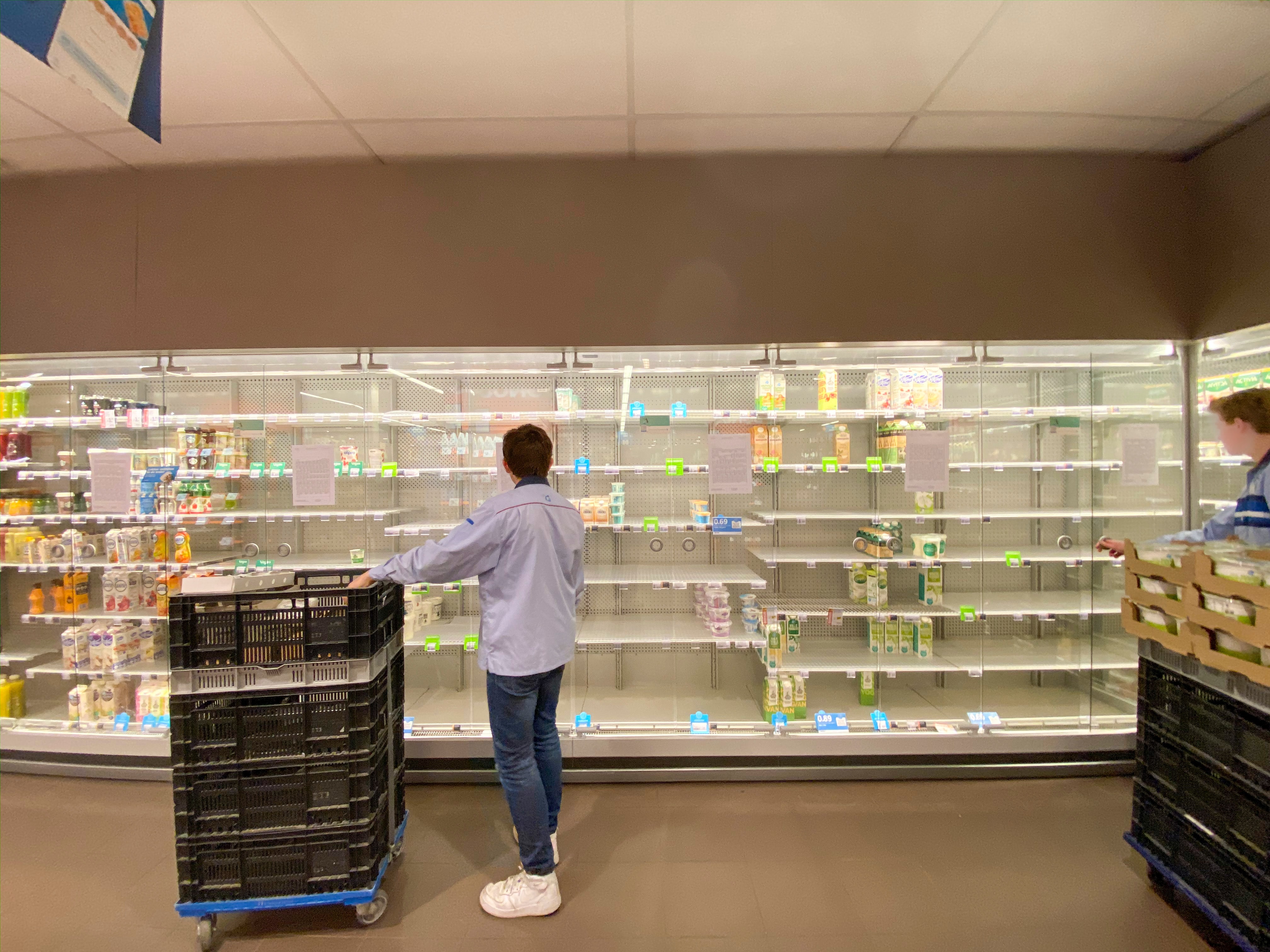
Executium on Unsplash.
Could blockchain technology protect patients from counterfeit medication?
Not so fast. We should be wary of trying to science our way out of large-scale health issues
Blockchain, a way to cryptically share and record information, has emerged as a revolutionary technology. The success of cryptocurrencies that use blockchain technology has fueled solutions that were focused on solving problems in the healthcare space. But they only serve as band-aids for larger systemic issues. While the technology itself is alluring, without oversight and changes in social policy, it will fall short.
Imagine you and your friends compete online, playing Among Us. One person might track everyone's wins and losses. But that also means that they can manipulate the records and give themselves extra wins. If they're careful, they can get away with it. In a blockchain, multiple nodes record every transaction. That makes it a lot harder to get away with cheating. Thus, the blockchain acts as a recording or ledger of cryptocurrency transactions.
It's no surprise then, that the blockchain hype-train continued cruising. Digital art-pieces and collectibles called non-fungible tokens, or NFTs, experienced a whopping $93 million in sales in the last three months of 2020. In the first quarter of 2021, this soared to a whopping $2 billion. One set of 24x24 pixel pieces of art called CryptoPunks regularly resell for several million dollars. Owners can list their CryptoPunks on sites like OpenSea for a set price or through an auction-style sale. The blockchain ensures that each piece is unique.
.jpg)
An advertisement for Blockchain at Times Square in New York City.
Pascal Bernardon on Unsplash.
These security and verification features are promising outside of collectibles and hobbies. Innovations in finance and technology apply the blockchain to tackle specific problems, such as transferring money overseas. The blockchain also enables the creation of smart contracts that help two parties conduct a transaction. This contract verifies the authenticity of an item or cryptocurrency before executing the sale. It helps protect the buyer and seller from fraud without requiring a third-party for the transaction. Some healthcare researchers believe that the blockchain can also solve important problems, such as giving users ownership of their personal health information. Take for instance Nebula Genomics, which provides genome sequencing services direct-to-consumers, storing the data through the blockchain. This ensures that a person's private data is secured and allows them to choose which companies and studies they want to "rent" their data to.
Despite the appeal of blockchain technology to solve problems of privacy and verification, it only addresses the symptoms of a larger systemic problem. A person's private health records, and information are in the balance. We can't oversimplify large-scale health issues into a simple technology problem.
Everyday, millions of people take counterfeit medications. Up to 10 percent of the world's drug supply in low and middle income countries is estimated to be counterfeit. The World Health Organization estimates that 30 percent of drugs sold in parts of Asia, Africa, and South America are counterfeit. Anti-malarial drugs can cost between $12 to $150, which is unaffordable for people in many non-Western countries. As a result, it is estimated that more than 20 percent of anti-malarial drugs in sub-Saharan Africa are counterfeit. While it's hard to find data from many countries, it is estimated that more than 12,000 deaths in Nigeria are attributed to counterfeit anti-malarial drugs.

Martino Pietropoli on Unsplash
In low- and middle-income countries, about 19 percent of anti-malarial drugs are substandard. According to Interpol, some counterfeit medications contain arsenic, rat poison, or mercury. This is a problem across many developing countries as well as Europe and North America. In the United States, people have died from taking counterfeit Xanax, which contained the hyper-potent opioid fentanyl.
During the pandemic, more and more people are buying drugs and nutritional or vitamin supplements online. How does the average person know if the medication they buy is legitimate? Even some pharmacies are often fooled by repackaged and resold medicines in Europe and North America. In 2016, the US investigated a counterfeit anti-cancer medication, Avastin, that made its way into 19 oncology practices.
Blockchain technology could enable us to check whether the medicine was made by a legitimate supplier. It would work like this: every time a manufacturer produces and packages up medication, it will record it on a blockchain ledger. The packaging would contain a code that could be scanned at every point on its journey towards your medicine cabinet. Consumers could look up a specific ID from their medication packaging, via a phone app. Only drugs made directly by manufacturers and verified across different checkpoints would appear as legitimate. Otherwise the consumer would get a warning.
In many ways, blockchain technology is extremely promising. But applying it to counterfeit medication only serves as a bandaid. Whether we like it or not, class and race impact our health outcomes and our ability to afford treatments. Until we address those and other large scale problems, people will continue to press their luck with sketchy distributors.
Many people look for counterfeit medications when they can't access them legally. In the UK, the speed, convenience, and cost of these medications supersedes the risk. In many countries, the high cost of prescription medication drives the counterfeiting industry. In Europe, medications are often bought for a cheap price, repackaged, and resold.

The high cost and scarcity of some medications in low and middle income countries leads some patients to consider counterfeit products.
Martijn Baudoin on Unsplash.
Blockchain is a convoluted solution that doesn't address the overarching problem. Though it might allow pharmacies and companies to verify medications, it won't fix the high cost of prescription medication or regulatory inefficiencies. Many people are aware of the risks of purchasing counterfeit medications. But legitimate medications are expensive or unavailable in the region, necessitating take the risk. They choose between the risk of the disease and the risk of fraudulent medication.
Could the blockchain improve another frustrating aspect of our healthcare? Most of us don’t have easy access to our electronic health records. They’re scattered across different offices and locations. Blockchain would ensure these records are securely stored. Most importantly, you would have access in the palm of your hand. Some apps already use the blockchain to encrypt and store personal health information.
There are plenty of nitty-gritty technological details that may limit the blockchain, such as the cost of adding transactions and large amounts of data to the blockchain. And, perhaps more importantly, there aren't any standardized ways of building these databases. But these are details — blockchain's main drawback is simply the lack of policy regulating or addressing fair and equitable health access in the first place. Whether it's access to personal health records or to high-quality, legally-produced medication, it's a solution that doesn't address the actual problem.
The first blockchain iterations and systems in healthcare settings are still very exciting. As a shiny new technology, it's appealing to throw it at any and every problem that seems to fit. But most large-scale problems in healthcare can't be solved by blockchain alone. The larger public policy issues continue to loom overhead.



This was an enjoyable and informative article highlighting an important intersection between technology, medicine, and poverty in its rawest form. We all know the gaps in the medical system. Particularly in countries where public health coverage is not available, the help and treatment you get entirely depends on what you can pay for.
This was a fantastic example of running before you can walk with blockchain. It’s a relatively new technology that we know very little about. So of course the first question is should we apply it to an area like medicine, which is rife with personal information and confidential documents? The second question is, as you put in the article, should we put the band-aid on, or fix the problem? These problems are gargantuan, and there are no easy or overnight solutions. But will blockchain applications make the problem worse? I have to be a skeptic and say I’m not convinced either way currently.
I look forward to seeing small-scale trials of this, particularly in regions hardest hit by counterfeit medications. There are a lot of unknowns to this radical approach, and I’d love to see how it would work on a small-scale before we take the leap into global pharmaceutical infrastructure.